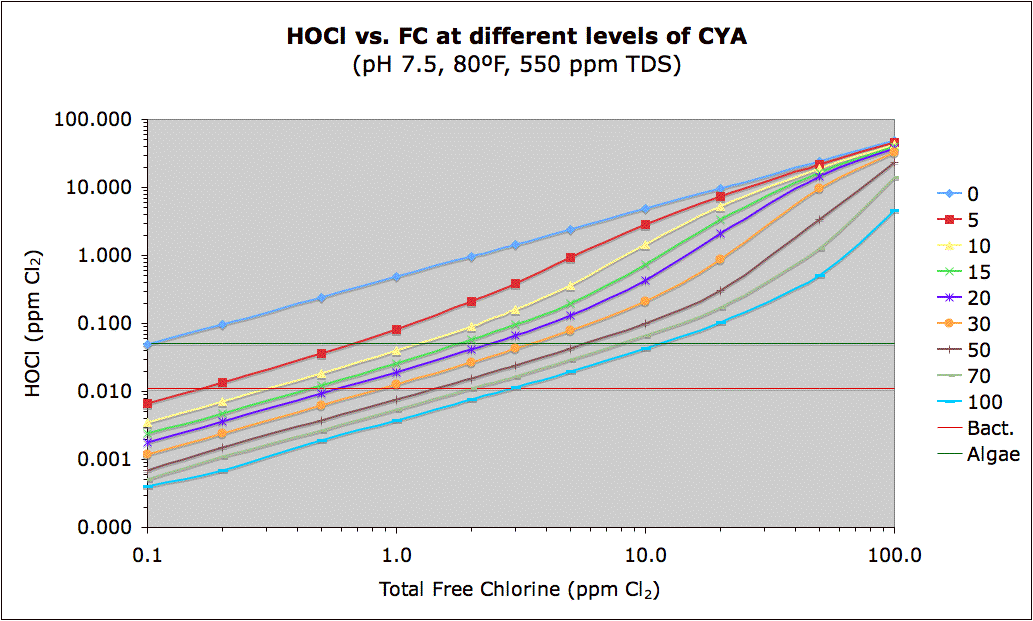So I have been searching for topics on what to do if a kid poops in the pool. ( hypothetical, thank goodness this hasn't happened). I found a bunch of good stuff, one link led me to the CDCs site which suggests "raising free chlorine to 2ppm for 30 min"
That is confusing.
Clearly they aren't accounting for cya. So how would one scale up their 2 ppm for a certain cya level. I'm familiar with the chlorine / cya chart so I know my own recommended levels but I was curious how this 2 would compare. Is 2 the CDCs shock level ignoring cya?
I'm having trouble expressing my question. I guess I'm looking for a ratio? Or what assumption is the CDC making about cya? Then I could do the following ratio:
cdc's cya / 2 ppm = my 40 cya / x ppm
maybe the answer is right in that chlorine / cya chart but I'm just not connecting it.
Thoughts?
john
That is confusing.
Clearly they aren't accounting for cya. So how would one scale up their 2 ppm for a certain cya level. I'm familiar with the chlorine / cya chart so I know my own recommended levels but I was curious how this 2 would compare. Is 2 the CDCs shock level ignoring cya?
I'm having trouble expressing my question. I guess I'm looking for a ratio? Or what assumption is the CDC making about cya? Then I could do the following ratio:
cdc's cya / 2 ppm = my 40 cya / x ppm
maybe the answer is right in that chlorine / cya chart but I'm just not connecting it.
Thoughts?
john


